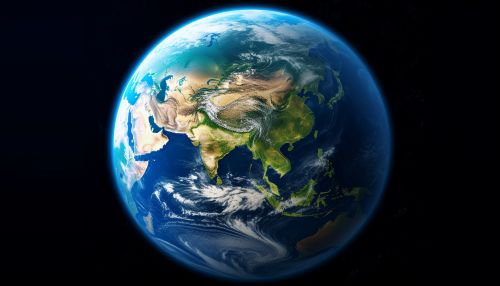Environmental Geochemistry
Introduction
Environmental geochemistry is a multidisciplinary field within geochemistry that involves the study of the chemical composition and processes of the Earth's environment. This includes the atmosphere, hydrosphere, lithosphere, and biosphere. The field is concerned with the cycling of elements through these systems and the impact of human activities on these cycles.
History
The field of environmental geochemistry emerged in the mid-20th century, as scientists began to recognize the importance of understanding the Earth's chemical processes in order to address environmental challenges. Early work in the field focused on understanding the natural cycling of elements and the impact of human activities on these cycles. Over time, the field has expanded to include the study of a wide range of environmental issues, from climate change to pollution.
Principles of Environmental Geochemistry
Environmental geochemistry is based on several key principles. These include the principle of conservation of mass, which states that matter cannot be created or destroyed, only transformed. This principle is fundamental to understanding the cycling of elements through the Earth's systems.
Another key principle is the principle of equilibrium, which states that chemical reactions tend to move towards a state of balance or equilibrium. This principle is important for understanding the behavior of elements in the environment, as it helps to predict how they will react under different conditions.
The principle of isotopic fractionation is also central to environmental geochemistry. This principle states that different isotopes of an element will react at slightly different rates, leading to changes in their relative abundances. This can be used to trace the movement of elements through the environment and to date geological events.
Applications
Environmental geochemistry has a wide range of applications. It is used in the study of climate change, to understand the chemical processes that drive changes in the Earth's climate. It is also used in the study of pollution, to identify the sources of pollutants and to understand their behavior in the environment.
In addition, environmental geochemistry is used in the study of natural resources, to understand the formation and distribution of minerals and fossil fuels. It is also used in the study of soil and water quality, to assess the impact of human activities on these resources.
Techniques
A variety of techniques are used in environmental geochemistry. These include spectroscopic techniques, which are used to identify the chemical composition of samples. Mass spectrometry is also commonly used, to measure the isotopic composition of elements.
Other techniques include geochemical modeling, which is used to predict the behavior of elements in the environment, and remote sensing, which is used to collect data on the Earth's surface from satellites or aircraft.
Challenges and Future Directions
One of the major challenges in environmental geochemistry is the complexity of the Earth's systems. These systems are highly interconnected, and changes in one system can have far-reaching effects on others. This makes it difficult to predict the impact of human activities on the environment.
Another challenge is the need for more data. Many aspects of the Earth's systems are still poorly understood, and more data is needed to improve our understanding.
Despite these challenges, the field of environmental geochemistry is poised to make significant contributions to our understanding of the Earth's environment. As our ability to collect and analyze data improves, so too will our ability to understand and predict the behavior of elements in the environment.
See Also












